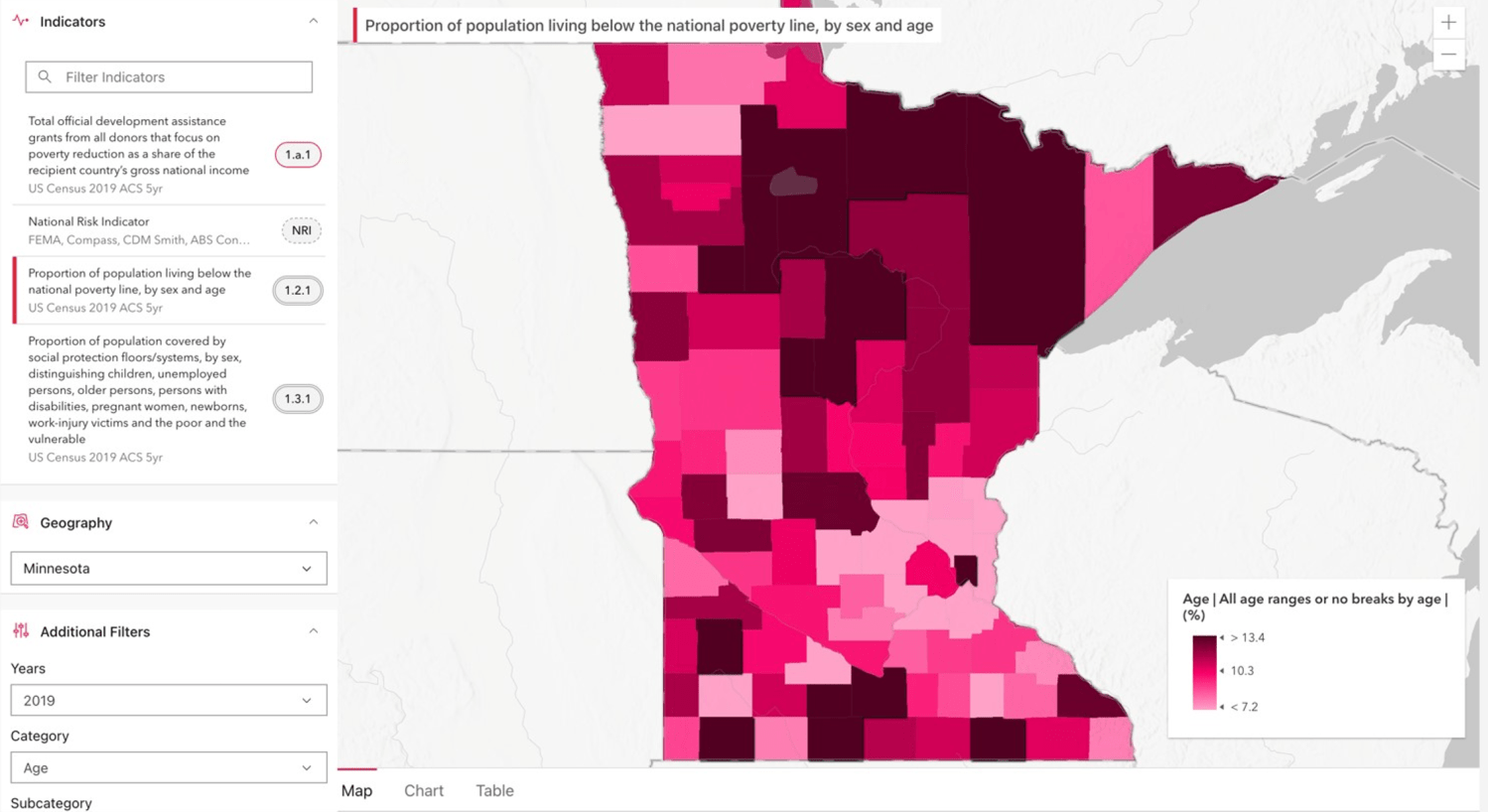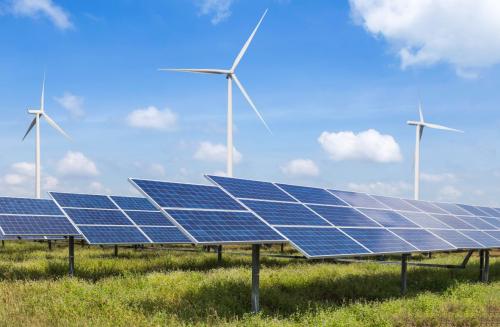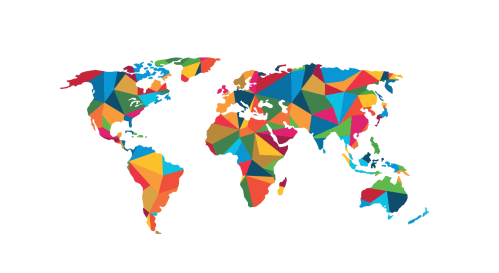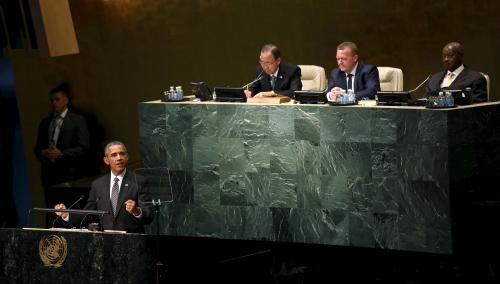In July 2015, as then-U.N. Ambassador Samantha Power encouraged U.N. member states to break an impasse to agreement on the Sustainable Development Goals (SDGs), she emphasized how a late U.S. commitment to the Millennium Development Goals (MDGs) had enabled a major change in its strategy to reduce the number of deaths of children under 5 years of age (MDG 4) just three years from the deadline. The U.S. doubled down on its efforts in 24 of the most affected countries and, in collaboration with India and Ethiopia, launched a worldwide initiative that resulted in saving more than 500,000 children’s lives in the next two years.
Will history repeat itself? An analysis that one of us authored shortly after President Biden took office showed the U.S. to be the only donor out of 20 OECD counterparts to have no formal alignment in its development policies and programs with the SDGs. In the two years since, while the administration has publicly expressed its support in general terms—examples include mentions in the USAID Policy Framework, a new USAID storytelling web page, and remarks this year by Secretary of Treasury Janet Yellen—it has been slow to translate this support to a policy imperative that would affect the conduct of its international development investments.
A strong U.S. commitment to the SDGs would also implicate U.S. domestic policy. Unlike the MDGs, which were primarily focused on low-income countries, the SDGs ask all countries—no matter their level of development—to attain the targets. The SDGs recognize that every country, including the U.S., has areas for improvement, especially given their focus on leaving no one behind.
In early 2023, in preparation for the head-of-state SDG Summit to be held at the U.N. on September 18-19, the National Security Council (NSC) requested all development assistance agencies to show a deliberate link to the SDGs.
Briefly, here is how principal U.S. foreign assistance agencies are responding to the request, and how it could prompt greater U.S. global leadership.
Development Finance Corporation
The effort by the U.S. International Development Finance Corporation, preceding the NSC directive, is the most advanced approach within the U.S. government. In 2022, it released the Impact Thesis, updated in August 2023, that measures the development impact of DFC’s projects across three pillars—economic growth, inclusion, and innovation.
The Impact Thesis sets out strategic objectives across two cross-cutting themes—inclusion and climate—and five priority sectors—energy, small business support and financial services, food and agriculture, health, and infrastructure and critical minerals. For each crossing-cutting theme and sector, it identifies the nature of the problem; population groups most affected; what DFC is doing; annual impact targets; how much change is happening due to DFC investment; and third-party metrics (IRIS+ and HIPSO).
In aligning with the SDGs, each sector and cross-cutting priority is mapped to one to three SDGs (maximum of three in order to be comprehensive yet manageable). Starting with third-party data to assess the global gap in achieving an SDG target, DFC then takes into account its focus countries and nature of its portfolio to create its own ambitious targets that push the agency to make a greater contribution to closing those SDG gaps. This target-setting process and the resulting SDG-aligned targets will be presented in an upcoming report that demonstrates the potential usefulness of the SDGs in helping the U.S. government focus its leadership and contributions to maximize impact.
Millennium Challenge Corporation
Viewing the SDGs as the international language in multilateral spaces, the Millennium Challenge Corporation in January began the process of mapping the entirety of its investments to the SDGs. The aim is to understand how each MCC project contributes to a country’s SDG ambitions. In complement to the mapping of its own portfolio, MCC is also tracking the SDGs that each partner country has identified in the Voluntary National Reviews. MCC will use these data to show how investments are aligned with multiple SDGs and deliver impact in country partner’s priority areas.
USAID
USAID is mapping all U.S. foreign assistance across all U.S. agencies to the SDGs, to be accessible by January 2024 on a tab on the USAID-maintained dashboard foreignassistance.gov. Preliminary results are expected to be available by the time of the SDG Summit. It has also created a new SDG web page and is encouraging missions to engage with partner countries on the SDGs where they frame their development strategies around the global targets.
Department of State
The Department of State has the lead in negotiating for the United States on the outcome document for the SDG Summit and in continued U.N. business focused on accelerating progress on the SDGs.
Department of Treasury
The Treasury Department does not make direct investments reportable as contributions to a specific country; rather, its investments are contributions to multilateral development banks (MDBs), which then report on impact on the SDGs. It views the SDG Summit as an opportunity to broaden attention to and accelerate action on the Evolution Roadmap for the World Bank Group, in order to reform the MDBs to reach greater scale. It views the shortfall in SDG progress as highlighting the inadequacy of global investments and providing urgency for the objectives reflected in the Evolution. Treasury views alignment with the SDGs as a means of advancing U.S. priorities such as climate, health and food security, and digital development, and in facilitating U.S. partnering with the MDBs.
Next steps
Mapping of U.S. development assistance to the SDGs should be viewed as just the beginning. Integrating the policy implications and meaningfully using data and analysis to improve the impact of U.S. investments, both at home and abroad, should be the goal. The more significant task is to identify opportunities to mobilize new resources and enact policy changes that will accelerate the path to achieving the goals, advancing both the United States’ international leadership and domestic social and economic welfare.
To achieve this, we recommend a four-pronged strategy:
1. Present a US Voluntary National Review (VNR)
The U.S. is one of only five member states that have not officially reported its progress on the SDGs at the U.N. Officially measuring its domestic and international investments against the international standard would be an immediate demonstration of its willingness to partner, invest, and lead within a collective framework that has become the lingua franca of development internationally. A VNR can help identify the most significant opportunities that the U.S. has to close domestic gaps in the SDGs and serve as a roadmap for the most urgent physical and human capital investments over the next seven years.
2. Bring US domestic agencies to the table
For a U.S. domestic agency to be an SDG player requires data on how the U.S. ranks on the SDGs. The Obama administration started down that route with the office of the U.S. chief statistician in the Office of Management and Budget, in collaboration with the General Services Administration and the U.S. Office of Science and Technology Policy, establishing in 2017 a reporting platform for U.S. national statistics for the SDGs. But the previous administration placed a lower priority on this, and the data has not been updated since.
To its credit, the geospatial division of the Census Bureau has begun to map the process of linking data, people, and location to the SDG targets. Using Esri’s geographic information software, a team at the Census Bureau has developed a prototype that geographically visualizes SDG progress on particular targets to the local level in the U.S.

Source: Esri
This highlights the potential of building upon SDG dashboards being used at the state, city, and university levels, for example by Hawaii, Los Angeles, and the University of Minnesota. The geospatial data that Census is developing could be a powerful tool for U.S. government agencies to identify gaps and develop new partnerships to address key policy priorities. The administration should commit the resources to build out this model to make it functional for all SDG targets and indicators relevant to the U.S.
3. Direct US development agencies to identify promising policy opportunities
As demonstrated by the example of Ambassador Power in 2015 on child survival, the real power of the SDGs lies in identifying opportunities for policy change and increased impact. A directive from the White House that asks agencies to identify and propose changes in strategies to maximize the impact of U.S. contributions in accelerating progress on the SDGs would be the natural next step.
4. Commitment to strengthening multilateral development banks
Maybe the strongest indication of commitment to the SDGs would be for the U.S. to lead shareholders to strengthen multilateral development banks, by funding its share of the proposed tripling of resources. This would be a concrete step to follow through on National Security Adviser Jake Sullivan’s recent recognition of their efficiency, transparency, and best “bang for the buck” in addressing poverty reduction and advancing inclusive economic growth, and as endorsed by key stakeholders and voices.





Commentary
The SDGs: A second-half opportunity for US global leadership
September 13, 2023